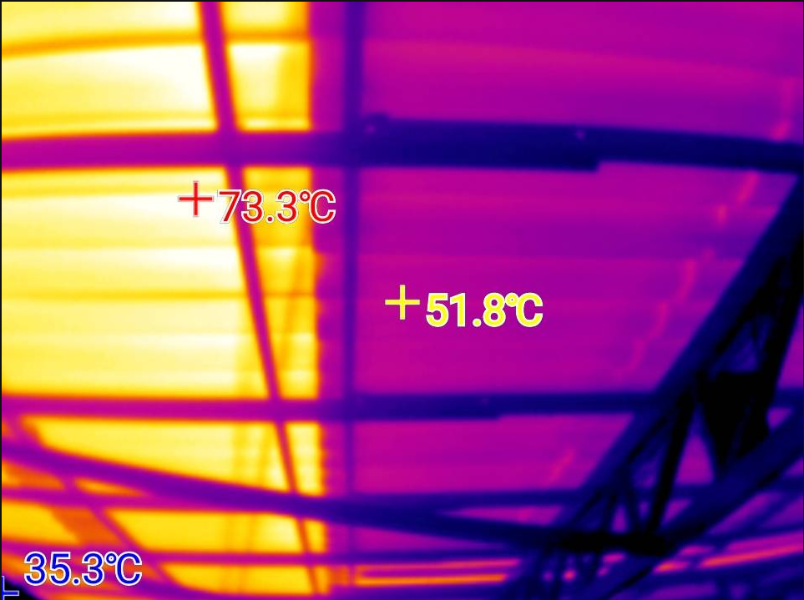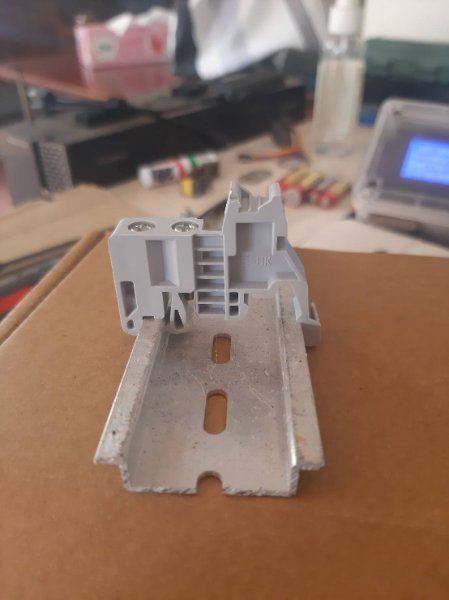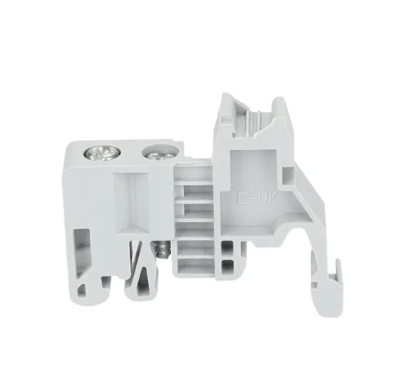-
Posts
46,373 -
Joined
-
Last visited
-
Days Won
2
Content Type
Events
Forums
Downloads
Quizzes
Gallery
Blogs
Everything posted by Crossy
-
Have a look at this page https://en.wikipedia.org/wiki/Earthing_system Thailand is generally TNC-S with MEN (Multiple Earthed Neutral), the neutral is held at or near earth potential by having a ground rod at every 3rd pole or so along with every installation having a local rod and N-E bond. There can only be one N-E bond in an installation. A N-E bond placed on the downstream side of an RCD/RCBO will generally result in the RCD not staying closed, or if it does stay on then applying any load will cause it to trip.
-
Sounds good. You can use this cable calculator https://www.doncastercables.com/technical-help/ As noted in the other thread, do NOT provide a N-E link at the shed, you are making a "TT island".
-
Let's say 20A at 50m then you are looking at using 4mm2 cable, any longer and you need to go to 6mm2. RCD/RCBO at the supply end. To save a few $$$ make it a "TT island" by using 2-core cable and placing a ground rod at the shed. Note- Do NOT provide a N-E bond at the shed end.
-
RCD/RCBO should be at the supply end. If you are feeding several circuits (shed/workshop) as small consumer unit/distribution box in the shed would be wise.
-

Should a fridge or freezer at a restaurant have a breaker?
Crossy replied to ubonr1971's topic in The Electrical Forum
It is often recommended that your refrigeration be on a separate circuit, but this is more to prevent nuisance trips taking out your food stocks rather than for electrical safety. Assuming that your re-wire is up to standard and they don't overload anything then there's no danger of conflagration. That said, if they are doing the Thai thing of having loads of traily extensions with freezers all on one outlet then I'd want them to rationalise and spread the load over several outlets. A splash of common sense is your best weapon. -

Solar panel package suggestion.
Crossy replied to kwak250's topic in Alternative/Renewable Energy Forum
Rule one of solar - We don't talk about solar. Ah sorry, wrong rule! Rule one of solar - You can never have too much solar! Rule two of solar - You can never have too much storage! Rule three of solar - If you are breaking rules 1 and/or 2, buy an EV. Once you've been bitten by the free-energy bug you will be assimilated! Resistance is futile! -

Solar panel package suggestion.
Crossy replied to kwak250's topic in Alternative/Renewable Energy Forum
Car ports with solar panels make excellent (and cool) entertainment spaces 🙂 Stick some LED strip lights in there and you can host local wedding parties etc. The underside of our car-port roof before we finished installing the panels, guess where the solar panels end ... -

Solar panel package suggestion.
Crossy replied to kwak250's topic in Alternative/Renewable Energy Forum
Have you applied any thought as to where you are going to put your panels? I'd avoid the house roof unless space is seriously restricted and go for your car port and/or ground mounts. Easier/safer maintenance (cleaning) and the odd leak in a car port isn't a disaster. We started out with 4 x 330W panels which bred whilst I wasn't looking and are now 79 panels of various flavours totalling 27kWP and covering an expanded car-port and every other viable flat space. Honestly, I never intended going this mad but I got a great deal on a stack of panels and batteries from an estate clearance (a mate's widow just wanted them out of the way) and well, here we are Car port thread here: - -

Solar panel package suggestion.
Crossy replied to kwak250's topic in Alternative/Renewable Energy Forum
Before going to contractors, you need to decide exactly what you want to achieve:- Reduce your existing bill at lowest cost but no protection from power cuts (grid-tie but with zero-export). Reduce your bill and have protection from power cuts (small hybrid with small battery). Eliminate your bill but maintain a grid connection for backup (bigger hybrid, bigger battery). Go totally off grid (even bigger hybrid and batteries with lots and lots of panels). Knowing your day (9AM to 5PM) vs night (5PM to 9AM) usage is a good starting point to determining exactly what you need so you don't waste your valuable $$$. Contractors always over-estimate what their system will deliver and quote what it will do on the longest, most perfect day "forgetting" that 99% of days are not perfect. -

Solar panel package suggestion.
Crossy replied to kwak250's topic in Alternative/Renewable Energy Forum
Let's add a "possibly" to that. There have certainly been reports of such practices but the few meters I've looked at log export separately and the units simply don't appear on the bill. Anyway, attempting to do unofficial net-metering using an electronic meter is at best unwise. The old whizzy-disk meters do happily go backwards, but as previously noted the practice is frowned upon by PEA/MEA and I wouldn't recommend doing it. Things were different when we started doing solar and our local PEA boss-man said (after he had stated at great length "you will not spin your meter backwards") in hushed tones "don't let the meter reader see it going backwards" These days, anything DIY should avoid exporting energy to the grid**, if you have surplus generation that you want to use at night then batteries are the order of the day. If you want to go official with export (and getting "paid" for the energy) then you need to go with a certified installer = $$$ ** We have one member who has successfully got a DIY system licenced for grid export. The costs associated seem to be IMHO simply a non-starter, spend the money on battery storage. -

Electrical wire question for my land
Crossy replied to advancebooking's topic in The Electrical Forum
Translation "usually" => "always". Place a weatherproof outlet right next to where your pump is going, and don't forget to use service-unions and leave loads of straight "adjustment length" on your pipes to the pump. -

New house - a few questions for the electrical system
Crossy replied to CLW's topic in The Electrical Forum
@CLW do post what your potential sparks is proposing (redact any actual names just in case we say it's a pile of dingo's-kidneys ©Douglas Adams) Sadly, the best sparkies are working on the mega-projects or O&G leaving the dregs for house-bashing 😞 -

A few questions about my electrical installation/ consumer unit
Crossy replied to Jurghh's topic in The Electrical Forum
Yeah, I was wondering about space at the top. You could of course screw a bit of DIN on to the existing back plate just for the end thingies. -

A few questions about my electrical installation/ consumer unit
Crossy replied to Jurghh's topic in The Electrical Forum
Bag of 10 for 50 Baht plus shipping https://www.lazada.co.th/products/euk-euk2-din-10-i5524156085-s23469848408.html If you have a "proper" electrical shop in your area, you should be able to get there. -

A few questions about my electrical installation/ consumer unit
Crossy replied to Jurghh's topic in The Electrical Forum
It fits like this onto an actual DIN rail, looking at it you may not even need to modify 🙂 Clip it over and tighten the screws to lock in place. One at each end of the stack and you're gold. -

A few questions about my electrical installation/ consumer unit
Crossy replied to Jurghh's topic in The Electrical Forum
Ah, I see. You might be able to use a DIN end-stop at each end if you can get the type with a locking screw. Let me check what's available. EDIT Something like this may do the trick, it may need a little modification to the side without the screw. -

A few questions about my electrical installation/ consumer unit
Crossy replied to Jurghh's topic in The Electrical Forum
Why don't they clip on?? Could you adjust the rail mounting holes to move the rail so they do clip on? You could probably fashion something or maybe use a DIN end-stop that does clip on but you should really support the beasts properly, you don't want to stress the terminals. -

A few questions about my electrical installation/ consumer unit
Crossy replied to Jurghh's topic in The Electrical Forum
Your N-E bond MUST be on the supply side of your RCD otherwise you may get random tripping. I would try separate N-E bonds for the grid and the genset (I'm assuming your transfer switch does switch the neutral). Could you do a quick sketch of your arrangements (including any rods and N-E bonding)? -

A few questions about my electrical installation/ consumer unit
Crossy replied to Jurghh's topic in The Electrical Forum
Does it stay on ok once the genset is running? I'll put money on something awry with the way your N-E bond is being handled. Relative to the transfer-switch where is your N-E bond? -

How about a solar car port on a budget?
Crossy replied to Crossy's topic in Alternative/Renewable Energy Forum
If I had a pound for every time the maths brain has gone awry ... 🙂 I will say that my beautiful, blue-eyed, blonde haired, large breasted, Essex girl, ex-wife also had some "interesting" ideas on finances. She once drew a whole bunch of cash at the ATM because the "balance kept getting bigger" - something to do with the "OD" on the same line She traded me in for a newer model! (The building contractor who built our extension, of course she told me after I'd paid him). -
Grounding the hot (via your lamp) should be tripping the Safe-T-Cut - it did 🙂 If your lamp never actually lit, (maybe a flash hot to ground before the Safe-T-cut opened) there's really no issue. What are you actually worried about?
-
I think it's absolutely fine, but do try a lamp if you have one 🙂
-
You mean "zero" volts, yes?
-
The magnitude of phantom (or whatever you want to call them) voltage is very much dependent upon your wiring arrangements and the length of parallel runs. it's this effect that sometimes causes LEDs to "glow" even when off (most annoying that is). "Electricians meters" often have a "low-impedance" button that slugs the input of the meter to bust the ghosts. You could try a small 220V incandescent lamp instead of your meter, if it lights you have a problem. Do you read anything between neutral and your "off" circuits?
-
You are probably reading "phantom voltages" caused by capacitive coupling and the high input-impedance of your multimeter. Also, any load still on those circuits (plugged in charger for example) will have a similar effect. Nothing to worry about.










